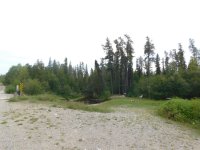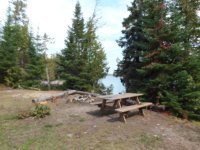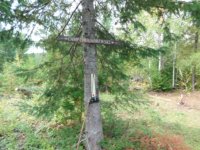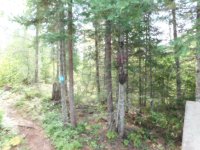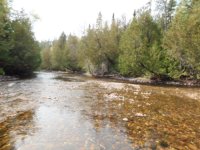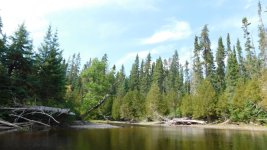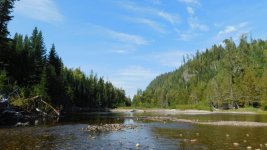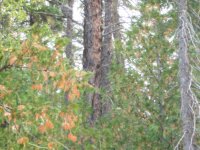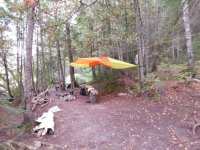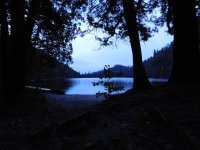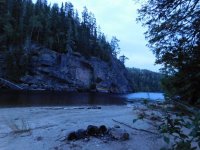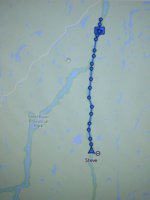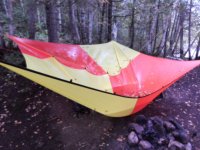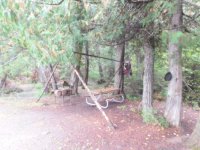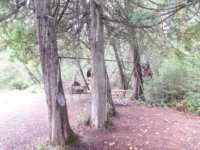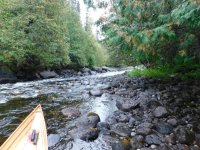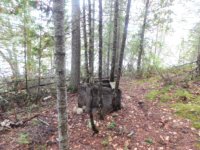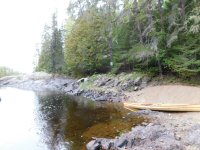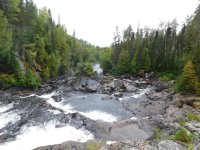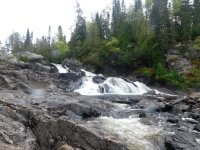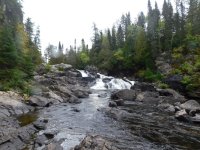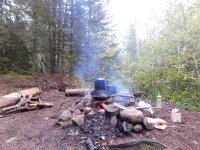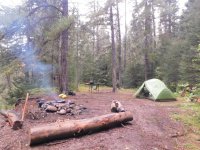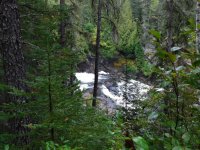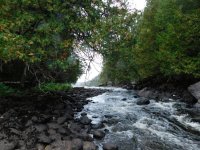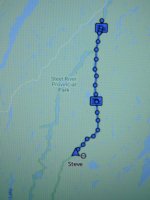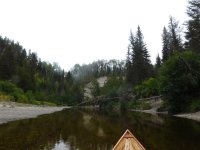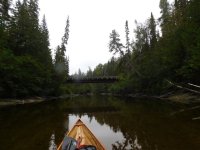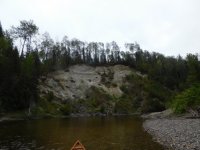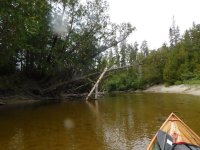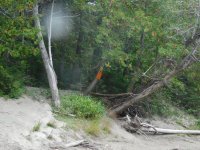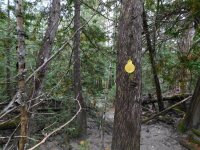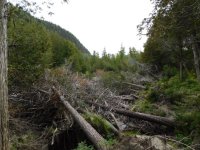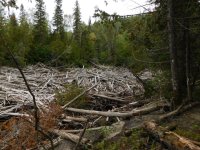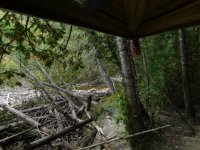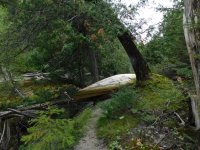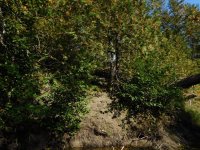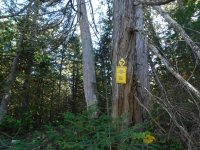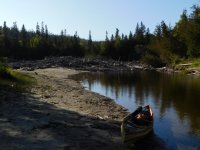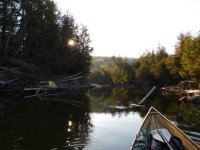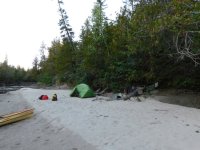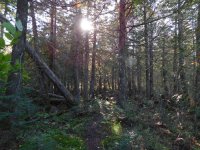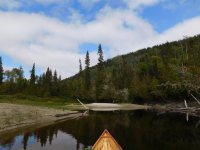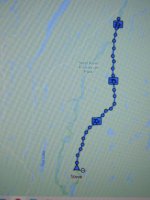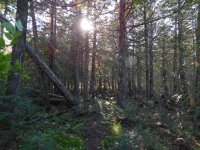- Joined
- Aug 10, 2018
- Messages
- 1,739
- Reaction score
- 2,622
The Background:
Ever since returning from my BWCA trip, I've been wanting to get out on another extended wilderness solo. I wanted something even more remote where I might not see people for days at a time and it had to be a loop so I could do it without arranging shuttles. Initially, I was set on Wabakimi... taking the train to Allanwater bridge, looping up to Whitewater lake, seeing the Wendell Beckwith cabins (or what's left of them) and then back to my car in Armstrong via Caribou lake ... all good, right?
Maybe not... I talked to Bruce at Wabakimi Outfitters and he advised against the Allanwater river unless I was a very experienced whitewater paddler and also discouraged doing it solo regardless of experience. Bummer.
I found plan B before I got kicked off of Facebook (they still haven't said why) in the form of a page about the Greenstone area canoe routes where the admin for the page is a fellow canoetripping.net poster known as Memaquay. Mem has a long track record of helping facilitate canoe trips in that area and some of my favorite YouTube creators credit him with providing maps. For me, it came down to his Marshall Lakes loop or the Steel River loop.
I eventually hope to do both but, for 2023 (for better or worse), I chose the Steel River and I had a local print shop print the maps that he sent on 12x17 inch (30.5 x 43.2 cm) waterproof paper so they fit nicely in my map bag.
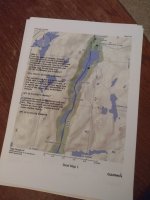
Steel River Provincial Park is located in NW Ontario, North of Lake Superior and, more or less, between the city of Terrace Bay and the town of Longlac. It is considered a non-operating park, is administered by the Ministry of Natural Resources office (Nipigon Cluster) in Terrace Bay and is what is known as "Crown Land". Unlike the US, only 11% of the land in Canada is owned privately and 89% is owned by either the Federal or Provincial governments. These lands are free for any Canadian resident to use (with some, but not many, restrictions) but non-Canadians must apply for a permit which, in my case, cost about $9 (US) a day. Permits are available here.
The route (170km / 106 miles) is remote, lightly traveled and may be most famous for having what is renowned as one of the most difficult portages in Ontario: The Diablo Portage. This portage, listed at 1.2 km (3/4 of a mile) and an elevation gain of 100 meters (330 feet) features 45 degree inclines, ankle twisting holes hidden amongst ferns and some of the roughest terrain anyone could cut a portage trail through. Although I knew it would be brutal, I considered it to be the price of admission to the loop and vowed that I'd get through it.
It seems that most YouTubers put in at the southernmost end of the loop on Lake Santoy and paddle about 8km (5 mi) North to access the portage on day #1 but Memaquay's maps started near the northernmost point in Eaglecrest lake, ran down the Steel river and returned to the truck via Diablo, Cairngorm and Steel lakes. This route made a lot of sense to me as it would allow me avoid a huge lake (never been a fan of huge lakes) and would give me some time to get my portage routine figured out as well as getting rid of some weight in the food bag before taking on Diablo.
It would also allow me to actually meet Mem in person, thank him for his help, show him the Freedom Solo strip canoe that I'd built for the trip and, perhaps, get a test paddle in my next build as he prefers the Raven designed by Martin Strep. Plans were laid for July 15th and Mem would (likely) paddle out onto Eaglecrest with me the first night then return home as I went downriver.
![DSCN1839[1].JPG DSCN1839[1].JPG](https://www.canoetripping.net/data/attachments/28/28046-74f5a6f0f261df2caf7d466fef263afb.jpg?hash=dPWm8PJh3y)
Due to the fire bans, however, I didn't actually schedule vacation at work (they lifted the fire bans in Ontario on July 11th so I could have gone) and the trip got kicked back until September. By this time, Mem had been pressed back into service at the teaching job from which he'd retired (twice, I believe) and the water level in the river had dropped dramatically. I was assured that I'd get through but the new boat would take a beating so on the Sunday preceding Labor Day, I hopped in the truck & headed north.
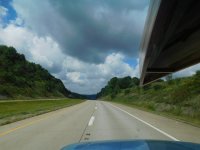
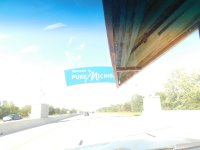
Ever since returning from my BWCA trip, I've been wanting to get out on another extended wilderness solo. I wanted something even more remote where I might not see people for days at a time and it had to be a loop so I could do it without arranging shuttles. Initially, I was set on Wabakimi... taking the train to Allanwater bridge, looping up to Whitewater lake, seeing the Wendell Beckwith cabins (or what's left of them) and then back to my car in Armstrong via Caribou lake ... all good, right?
Maybe not... I talked to Bruce at Wabakimi Outfitters and he advised against the Allanwater river unless I was a very experienced whitewater paddler and also discouraged doing it solo regardless of experience. Bummer.
I found plan B before I got kicked off of Facebook (they still haven't said why) in the form of a page about the Greenstone area canoe routes where the admin for the page is a fellow canoetripping.net poster known as Memaquay. Mem has a long track record of helping facilitate canoe trips in that area and some of my favorite YouTube creators credit him with providing maps. For me, it came down to his Marshall Lakes loop or the Steel River loop.
I eventually hope to do both but, for 2023 (for better or worse), I chose the Steel River and I had a local print shop print the maps that he sent on 12x17 inch (30.5 x 43.2 cm) waterproof paper so they fit nicely in my map bag.

Steel River Provincial Park is located in NW Ontario, North of Lake Superior and, more or less, between the city of Terrace Bay and the town of Longlac. It is considered a non-operating park, is administered by the Ministry of Natural Resources office (Nipigon Cluster) in Terrace Bay and is what is known as "Crown Land". Unlike the US, only 11% of the land in Canada is owned privately and 89% is owned by either the Federal or Provincial governments. These lands are free for any Canadian resident to use (with some, but not many, restrictions) but non-Canadians must apply for a permit which, in my case, cost about $9 (US) a day. Permits are available here.
The route (170km / 106 miles) is remote, lightly traveled and may be most famous for having what is renowned as one of the most difficult portages in Ontario: The Diablo Portage. This portage, listed at 1.2 km (3/4 of a mile) and an elevation gain of 100 meters (330 feet) features 45 degree inclines, ankle twisting holes hidden amongst ferns and some of the roughest terrain anyone could cut a portage trail through. Although I knew it would be brutal, I considered it to be the price of admission to the loop and vowed that I'd get through it.
It seems that most YouTubers put in at the southernmost end of the loop on Lake Santoy and paddle about 8km (5 mi) North to access the portage on day #1 but Memaquay's maps started near the northernmost point in Eaglecrest lake, ran down the Steel river and returned to the truck via Diablo, Cairngorm and Steel lakes. This route made a lot of sense to me as it would allow me avoid a huge lake (never been a fan of huge lakes) and would give me some time to get my portage routine figured out as well as getting rid of some weight in the food bag before taking on Diablo.
It would also allow me to actually meet Mem in person, thank him for his help, show him the Freedom Solo strip canoe that I'd built for the trip and, perhaps, get a test paddle in my next build as he prefers the Raven designed by Martin Strep. Plans were laid for July 15th and Mem would (likely) paddle out onto Eaglecrest with me the first night then return home as I went downriver.
![DSCN1839[1].JPG DSCN1839[1].JPG](https://www.canoetripping.net/data/attachments/28/28046-74f5a6f0f261df2caf7d466fef263afb.jpg?hash=dPWm8PJh3y)
Due to the fire bans, however, I didn't actually schedule vacation at work (they lifted the fire bans in Ontario on July 11th so I could have gone) and the trip got kicked back until September. By this time, Mem had been pressed back into service at the teaching job from which he'd retired (twice, I believe) and the water level in the river had dropped dramatically. I was assured that I'd get through but the new boat would take a beating so on the Sunday preceding Labor Day, I hopped in the truck & headed north.


Last edited:

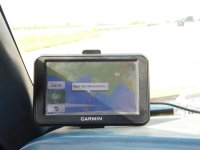
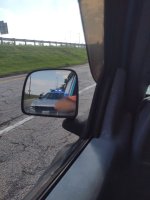
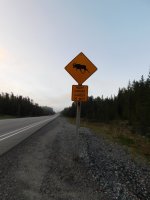
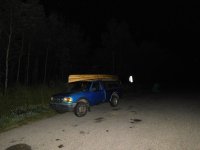
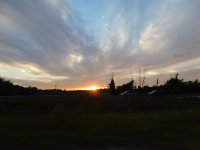
![DSCN1816[1].JPG DSCN1816[1].JPG](https://www.canoetripping.net/data/attachments/28/28054-09544ac05ede4cac1c2634119de0946b.jpg?hash=CVRKwF7eTK)
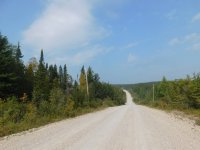
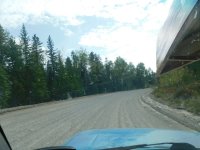
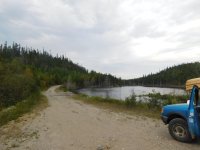
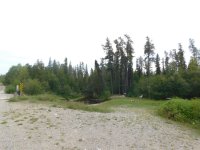
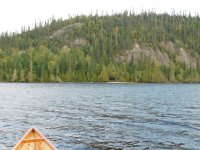

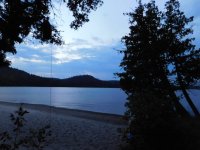
![DSCN1828[1].jpg DSCN1828[1].jpg](https://www.canoetripping.net/data/attachments/28/28102-682601f085792a0b3d1abc40e1193eba.jpg?hash=aCYB8IV5Kg)
![DSCN1827[1].JPG](/data/attachments/28/28101-122deea8c4b1aaf92359044abfe99253.jpg?hash=Ei3uqMSxqv)
